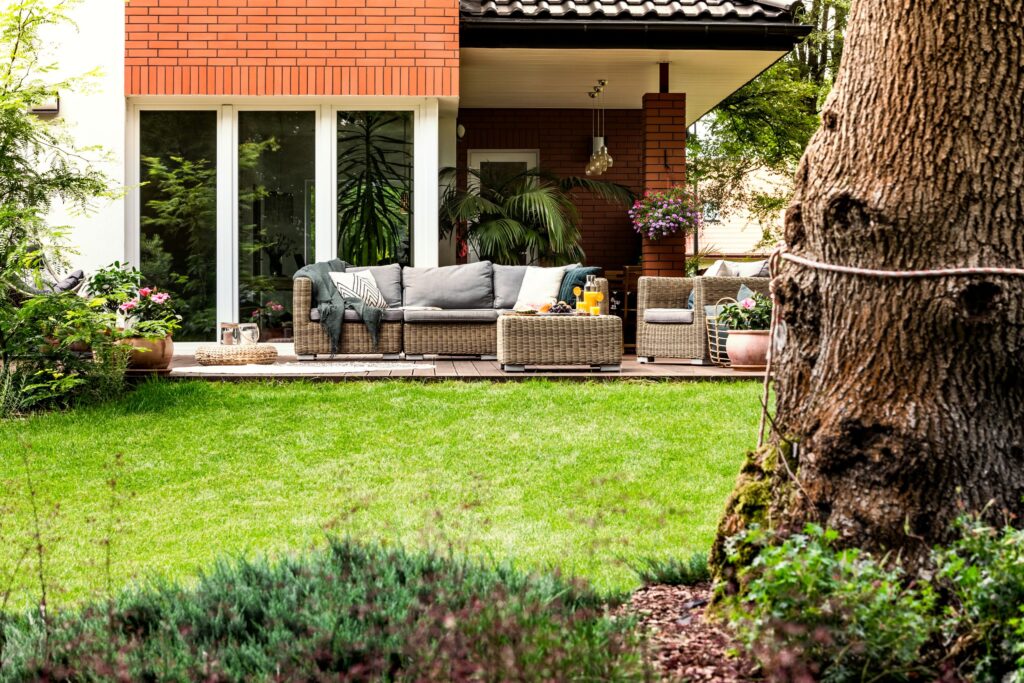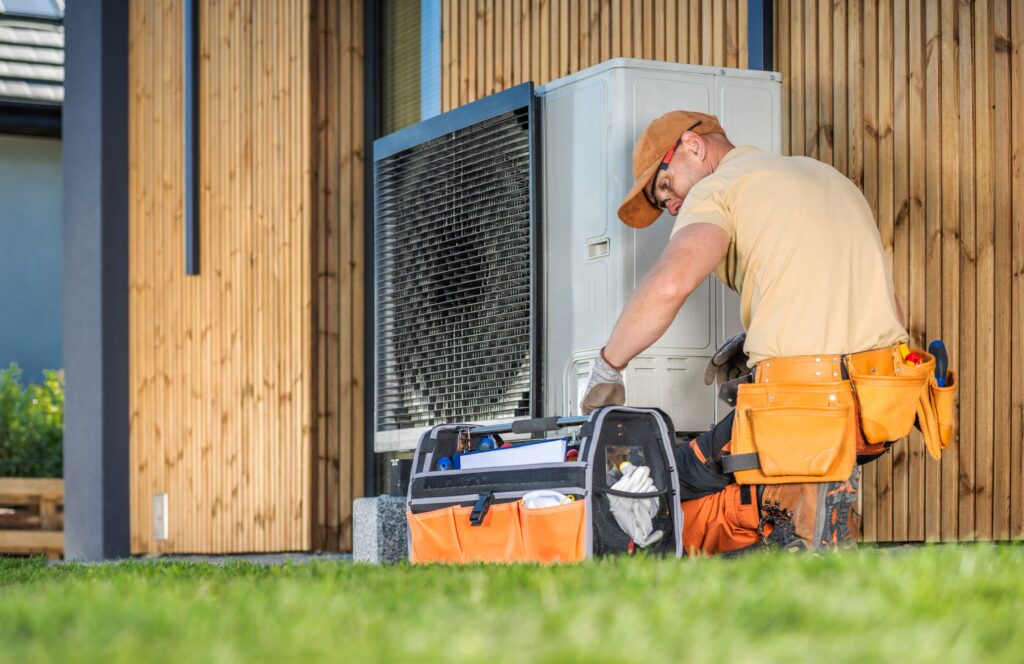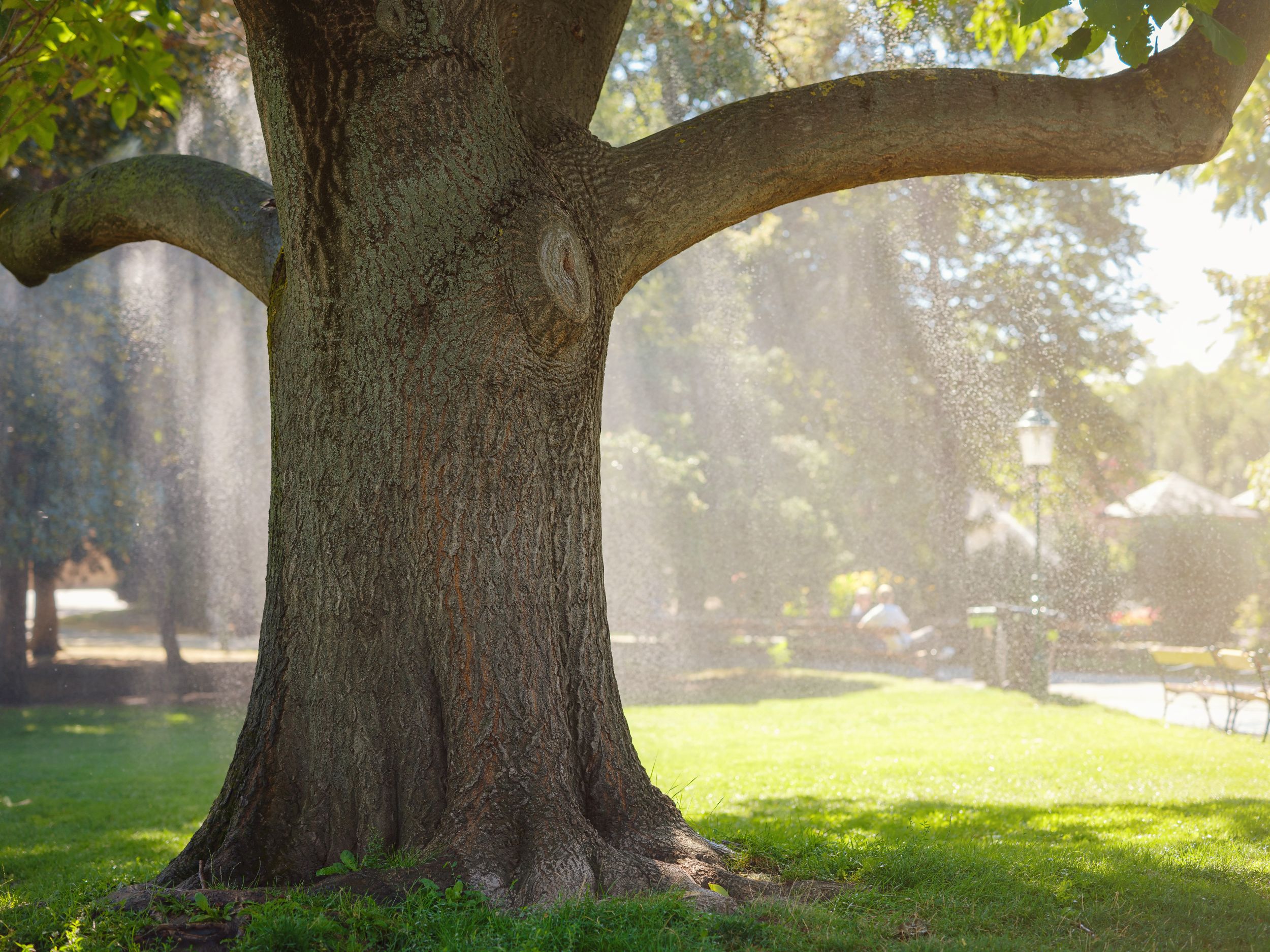St. Clair County homeowners love their trees—and for good reason. The lush canopy provides beauty, privacy, and that oh-so-welcome shade on hot summer days. But what many folks don’t realize is that all that leafy coverage can have a serious impact on their HVAC systems. At S&P Heating, we’ve seen firsthand how trees and shade affect AC repairs, cooling efficiency, and overall system lifespan. Some of the effects are positive… some, not so much.
So let’s dig into the root of the issue (pun absolutely intended). Whether you’re surrounded by oaks or flanked by maples, here’s how your tree coverage might be helping—or hurting—your cooling system performance.
The Benefits of Shade: It’s Not All Bad News
Let’s start with the silver lining. If your outdoor AC unit is tucked beneath a canopy of trees, it’s not baking in the sun all day. That can be a big win for your energy bills.
Shaded AC units often run more efficiently, especially during peak heat. Lower ambient temperatures mean the system doesn’t have to work as hard to remove heat from your home. That reduced strain can add years to your unit’s life.
But as with most things in life, there’s a catch…
The Hidden Costs: Shade That Strangles
Shade can be a double-edged sword. Yes, it cools the air, but it also creates the perfect environment for leaf debris in HVAC units, mold, and restricted airflow. And those are the kinds of things that lead to—you guessed it—AC repairs.
Here’s how:
1. Clogged Condenser Coils
Falling leaves, pollen, and sap from trees can collect on and around your outdoor unit. This buildup can lead to condenser coil clogging, forcing your AC to work harder to exchange heat.
When coils can’t breathe, your unit loses efficiency fast. And in extreme cases, clogged coils can lead to full breakdowns, especially when combined with summer AC strain.
2. Airflow Obstruction
Shrubs and branches crowding your unit don’t just look messy—they interfere with outdoor unit clearance. If the airflow around your condenser is blocked, it can’t properly disperse heat. This bottleneck often leads to overheating and, eventually, a technician visit.
Not surprisingly, AC repair frequency increases significantly when units don’t have at least two feet of clear space around all sides.
3. Moisture and Mold Trouble
Tree cover traps moisture, and when combined with limited air circulation, that creates a humid microclimate. A tree canopy microclimate can encourage moss growth, rust on metal parts, and mildew on the coil fins.
Over time, this leads to corroded components, funky smells, and unexpected system failures. Trust us—you don’t want your AC unit becoming a jungle.
Maintenance Tips for Homes with Heavy Tree Coverage
Don’t worry—we’re not here to tell you to chop down your favorite tree. But if you want to preserve your AC and avoid costly AC repairs in St. Clair County, it’s all about being proactive.
Here’s what you can do:
Trim Back Landscaping
Maintain a minimum two-foot clearance around the unit, and don’t forget overhead branches. This promotes airflow and reduces leaf debris in HVAC units.
Schedule Outdoor AC Unit Cleaning
At least once a year (twice if your yard is especially leafy), give your outdoor AC unit a thorough cleaning. This includes hosing off the coils, checking for blocked air vents, and clearing away any natural gunk.
Pro tip: If you’re not up for it, your local HVAC pros (hey, that’s us!) can handle it during your routine AC maintenance in St. Clair County.
Schedule Seasonal Maintenance
Speaking of maintenance, it’s even more crucial if your home is in a shady spot. That includes checking refrigerant levels, inspecting coils, and testing airflow. You’ll catch problems early and keep your unit running smoothly when summer hits full force.
Landscape Design: Friend or Foe to Your HVAC?

If you’re landscaping a new home or planning a backyard refresh, keep landscape and HVAC placement in mind.
Smart Placement Ideas:
- Keep trees and hedges at least 10 feet from the unit
- Avoid planting fast-shedding species (looking at you, cottonwoods)
- Build shade structures that allow airflow and don’t trap humidity
Not only will this improve cooling system performance, but it’ll also reduce your long-term maintenance load.
How Tree Shade Affects Your AC Lifespan
All these little factors—leaf buildup, airflow obstruction, excess moisture—add up over time. Shaded environments can extend system lifespan if maintained well… but they can also shorten it if left unchecked.
We’ve serviced countless systems in St. Clair County where neglect around foliage led to early failure. Most of these problems were preventable with a little regular attention.
Bottom line? Tree cover can be a blessing or a burden. It’s all about how you manage the relationship between your landscape and your HVAC equipment.
Real Talk: When to Call for AC Repairs
Noticing uneven cooling? Strange noises? Spiking energy bills? These may be signs your shaded AC unit is overworked or clogged.
Here are a few red flags to watch for:
- Your home never quite cools down (even when the thermostat says it should)
- You hear grinding or buzzing from the outdoor unit
- You spot mold or rust on the housing or coil fins
- It’s been more than a year since your last AC maintenance in St. Clair County
If that sounds like your situation, don’t wait. Catching problems early can prevent total breakdowns—and help preserve your system’s lifespan.
📞 Ready for a Maintenance Check? Let S&P Heating Help!

Whether you’re in the forested outskirts or a leafy suburban neighborhood, S&P Heating is here to help you navigate the tricky intersection of trees and technology. Our team knows exactly how shaded AC units behave in our climate and can recommend a custom maintenance schedule that keeps your system in top shape.
Want to avoid surprise breakdowns and extend the life of your AC? Book a service call today and let’s make sure your trees and HVAC play nice!
FAQ: Shade, Trees, and Your AC—What Else Should You Know?
How often should you inspect your outdoor AC unit if you live in a heavily shaded area?
If you have significant tree coverage, you should visually inspect your unit every month during spring and summer. Look for leaves, twigs, or dirt collecting around the unit, and make sure nothing is blocking the airflow. In addition to your own inspections, schedule professional maintenance twice a year to stay ahead of issues.
Can you build a pergola or shade structure over your AC unit to control exposure?
Yes—but be careful! Artificial structures like pergolas can help reduce sun exposure, but they must be well-ventilated and allow for proper airflow. Avoid fully enclosed covers or dense lattice materials that might trap heat or humidity. And make sure to leave adequate clearance for technicians to service the unit.
Don’t Miss What’s Next!
👉 How Local Building Codes in St. Clair County Affect HVAC Installation Requirements
Want to avoid permitting headaches and inspection delays? In our next article, we break down the local codes and what every homeowner should know before starting a new HVAC installation in St. Clair County. Don’t skip it—it could save you time, money, and a major construction setback.



